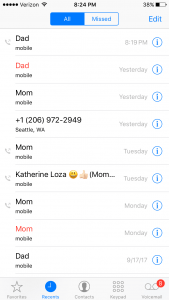
Artist’s Statement
The score Walk Home was inspired by several different things. The language and style of the score was inspired by some of Yoko Ono’s works in Grapefruit, while the subject was inspired by my fascination with public transportation systems and the Fluxus artist’s fascination with the mundane. The placement of the words on the page and the font were inspired by the fantastic interactive novella/game Device 6 by the group Simogo.
Like many of Ono’s scores in Grapefruit, I tried to keep the language of my score as short, simple, and vague as possible, while still communicating my ideas. Sentence structures were altered, traveling in a new direction became traveling to a new place, and restrictions on distance were removed. Despite having gone through several revisions, the words “Walk,” and “Home,” were never changed, though a replacement for home was considered several times.
I’ve always been fascinated by the fact that there is so much in the world that I will never see. Sure, there’s parts of the world I’ll never visit and even places in this country I’ll never get to see, but sometimes the places that fascinate me the most are the ones just down the street. The mundane, everyday places that aren’t necessarily special in any way, like the left fork of the neighborhood that I live next to. I’ve been to the right one several times, but I’ve turned left there. Someone spent a significant amount of time designing the houses on that street, but most people will never even think about that; it’s just a line of houses on a street, there’s thousands more streets like it.
Public transport fascinates me for similar reasons. There’s this massive interconnected system to take people where they need to go, but everyone is going somewhere different. Most people will only end up using a small portion of it on a daily basis, and few people will ever visit every stop in a system. Despite this, every detail of every station had to be designed by someone, and most people never stop and think about that. Which plants to put in a flower bed, the location of each request stop button on a train, the distance between the floor and the ceiling in a building, each decision was made by someone for a particular reason, and I don’t think that most people take the time to think about that.
One of the most interesting things that I noticed while testing and tweaking Walk Home was how the participants slowly begin to recognize their surroundings until they suddenly realize where they are. It gives them the chance to view something familiar in a new way and see details they may have missed.
Below is an audio log of a performance of Walk Home done by myself on the night of Monday, September 25th. I traveled outbound from the Northeastern Station of the Boston T system’s Green Line to the Brigham Circle Station, after which I walked home. In addition to the audio log, there is also a photo of several early versions of the score.













